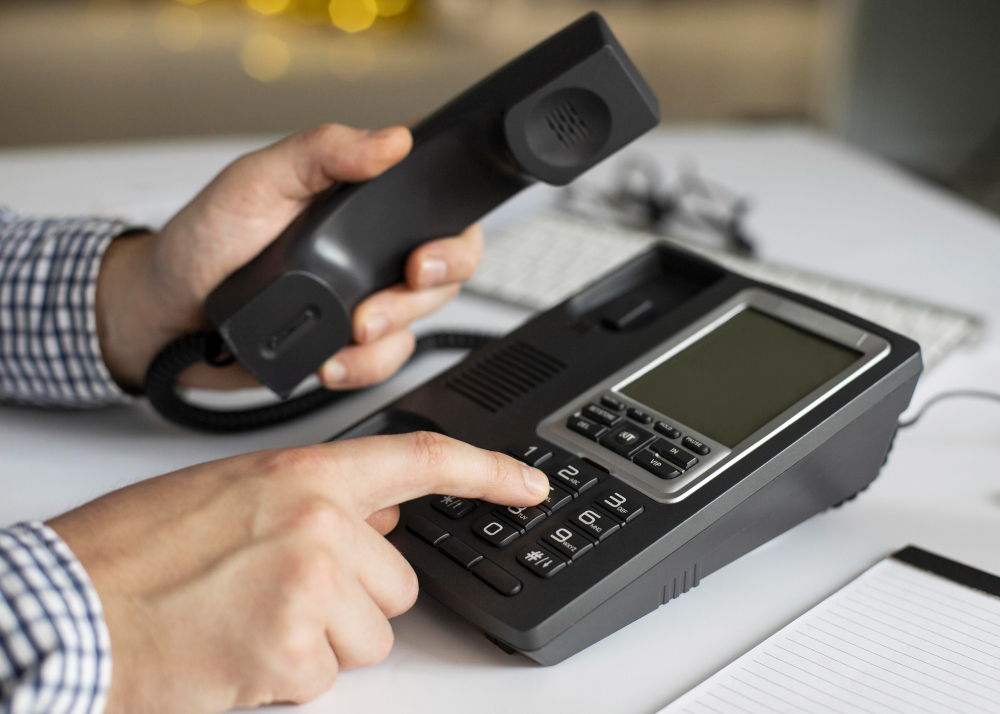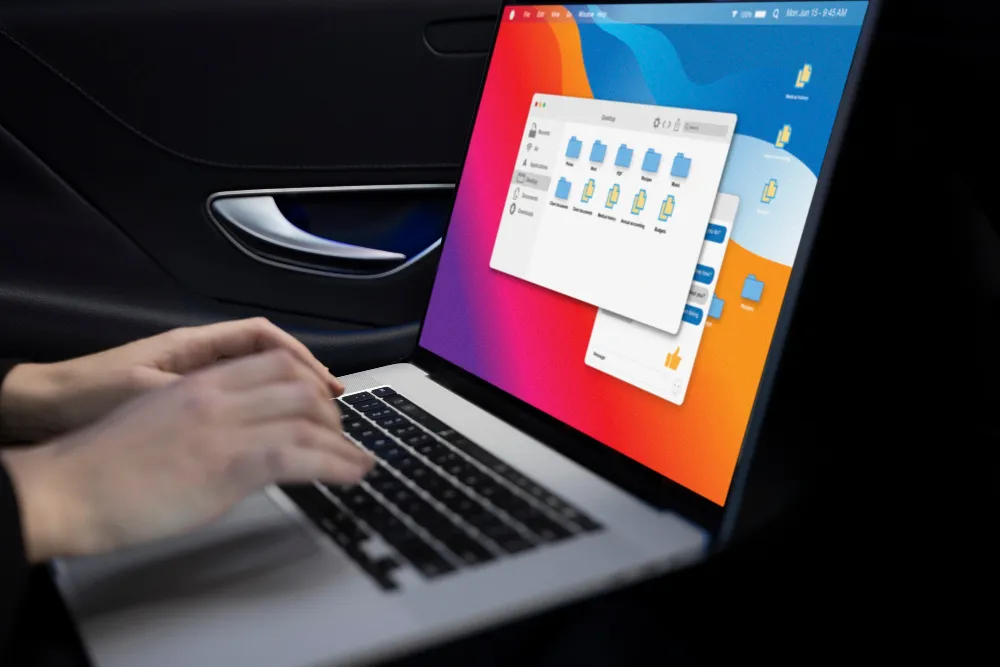Have you ever called a company and got stuck in a maze of automated messages, desperately hoping to reach a real person? It’s frustrating, right?
And guess what? Your business customers probably face the same experience when trying to reach you. This can seriously hurt your sales and customer service.
So, what exactly is a phone extension? A phone extension streamlines business communication, ensuring callers connect with the right person quickly and efficiently. In short, it’s your shortcut to specific departments or individuals within an organisation. It facilitates immediate communication with customer support, sales, or technical assistance, thereby saving time and reducing hassle.
Join us as we unravel the significance of phone extensions, exploring how they revolutionise communication and empower businesses and customers.
What is a Phone Extension?
A phone extension is a unique number that is linked to a single phone in a larger phone system. It’s an internal number used to reach an organisation’s particular person or department. Every extension is used for direct internal communication and is usually shorter than the main phone number. In corporate settings, phone extensions are frequently used to speed up internal communication and eliminate the need to dial lengthy exterior numbers in order to contact particular people or departments.
In business settings, phone extensions are often utilised in several ways:
- Internal Communication: Employees can use phone extensions to quickly reach their colleagues within the same organisation without going through external lines.
- Departmental call transfer: Each department may have its own range of extensions, making it easier for callers to be directed to the appropriate department or personnel.
- Direct Dialing: Employees may have their own unique extensions, allowing others to reach them directly without going through reception or switchboard services.
- Voicemail Access: Phone extensions are often associated with individual voicemail boxes, allowing employees to receive messages when they’re unavailable.
How many numbers are in an extension?
The number of digits in a phone extension can vary depending on the organisation’s phone system setup and preferences. However, the number of extensions typically ranges from 2 to 6 digits in length. The size of the organisation and its phone system capabilities can influence extension length. Smaller businesses might use shorter extensions (2-3 digits) for simplicity, while larger companies with more employees or departments might need longer extensions (4-6 digits) to accommodate everyone.
How to write a phone extension?
When writing a phone extension, you can include the main phone number followed by the extension number, separated by a specific symbol like a comma (,), a pound sign (#), or the letters “ext.” (short for extension).
For Example,
If the main phone number is (555) 123-4567 and the phone extension number is 1234:
- Written format: (555) 123-4567 ext. 1234
- Numeric format: 555-123-4567,1234 OR 555-123-4567#1234
How do Phone Extensions Work?
Phone extensions work behind the scenes within a company’s phone system to route calls efficiently. Here’s a breakdown of the process:
1. Dialing the Number:
First, dial the main business number you’re trying to reach. This telephone number typically serves as the primary point of contact for the organisation and allows you to connect with their customer service or support team.
2. Reaching the PBX:
The call travels through the phone network and reaches the company’s Private Branch Exchange (PBX). This is essentially the central hub of the phone system, responsible for routing incoming calls.
Looking to provide a hassle-free experience for your callers? Our team of experts is here to assist you in selecting the perfect phone system that simplifies navigating extensions for your customers. Reach out to us today!
3. Extension Recognition:
There are two main ways extensions can be recognised:
- Dialed After Prompt: In some cases, after the call connects to the company, an automated message might prompt you to dial the extension number. You can then dial the specific extension (e.g., 234) using your phone keypad.
- Direct Dialing: For some phone systems, you can directly dial the entire number with the extension included at the end. For example, if the main number is (555) 555-1212 and you want to reach extension 234, you can dial (555) 555-1212234.
4. PBX Routing:
Once the PBX recognises the extension (either dialled after a prompt or directly entered), it consults its internal directory. This directory maps each extension to a specific phone line, department, or voicemail box.
5. Connecting the Call:
Based on the extension information, the PBX routes the call to the appropriate destination:
- Individual Phone: If the extension is assigned to a specific employee’s phone, the call will ring on their phone.
- Departmental Line: If the extension is linked to a department, the call will ring on a shared line in that department, typically answered by the first available employee.
- Voicemail Box: If the extension is connected to a voicemail box, the call will be directed to the voicemail system, allowing the caller to leave a message.
How do you Set Up Phone Extensions?
- Determine Your Needs: Start by determining how many extensions you’ll need and what communication flow works best for your team. Are you looking for internal extensions only, or do you also need options for external calls?
- Choose a Phone System: Now that you have an idea of what you need, explore different business phone systems that can support your extension requirements. Find one that fits your budget and offers the features you need, whether it’s a traditional PBX or a modern VoIP phone system.
- Assign Extension Numbers: Once you’ve chosen a system, decide on a numbering scheme for your telephone extensions. You can go with sequential numbers or something more department-specific? Ensure everyone gets a number that’s easy to remember.
- Configure Hardware: With your system in place, it’s time to set up the hardware. Configure your phones or adapters to recognise your assigned extension numbers and route calls accordingly. This step ensures everything runs smoothly when you’re up and running.
- Program Features: Personalise your system by programming features for each phone number extension. Voicemail, call forwarding, conferencing – you can customise it all to meet the unique needs of your team members or departments.
- Test the System: Before you go live, run some tests to make sure everything’s working as it should. Check that calls are routed correctly and that all your programmed features are functioning smoothly.
- Train Users: Finally, ensure everyone knows how to use their extensions effectively. Provide training on features like voicemail and call forwarding, ensuring everyone feels confident and empowered to communicate effectively.
Need a Helping Hand with Phone Extension Setup? Don’t struggle with setting up your phone system yourself. Contact us today!
Different types of Phone Extension
- Internal Extensions: These extensions are used for internal communication within an organisation. Employees can dial each other’s extensions to connect directly without involving an outside phone line.
- Direct Dial Extensions: These extensions allow callers from outside the organisation to reach specific individuals or departments directly by dialling the main phone number followed by the extension.
- Departmental Extensions: These extensions are assigned to specific departments within an organisation. Callers can use the departmental extension to connect with the appropriate department or personnel responsible for handling their inquiries or requests.
- Virtual Extensions: Virtual extensions are often associated with virtual phone systems or VoIP (Voice over Internet Protocol) services. They can be configured to forward calls to different devices, such as smartphones or softphones, allowing users to receive calls on various devices using a single extension.
What are the Benefits of Phone Extensions?
Phone number extensions provide many benefits for businesses looking to improve communication. Let’s see how using phone extensions can make a big difference in how you communicate both inside and outside your company:
- Streamlined Internal Communication: Phone extensions simplify talking to colleagues by letting you dial them directly with a short number, skipping the need to go through a receptionist. This means you can share information faster and work together more smoothly, making the whole team more productive.
- Direct Departmental Access: With extensions, you can call specific departments directly without having to navigate through long menus or wait on hold. This saves time and frustration, ensuring that your questions or issues get resolved quickly and efficiently.
- Personalised Connection: Each employee’s own extension means callers can reach them directly, making interactions more personal and friendly. Instead of feeling like just another caller, people feel like they’re talking to a real person, which can improve relationships and customer satisfaction.
- Adaptability for Remote Work: Extensions can be set up to forward calls to employees’ mobile phones or home phones, keeping everyone connected even when they’re not in the office. This flexibility means remote workers can stay in touch with colleagues and clients easily, maintaining productivity no matter where they are.
- Scalability: Adding or removing extensions is easy, so the phone system can grow with the organisation without any hassle. Whether the team is expanding or downsizing, the phone system can adjust accordingly, ensuring smooth communication at all times.
- Cost-Effective Solutions: Using extensions for internal calls can save money on external call expenses over time. By relying more on internal communication, organisations can cut down on phone bills without sacrificing effectiveness.
- Professional Image: A phone system with extensions gives a professional impression to callers, showing that the organisation is organised and efficient. This professionalism can enhance the organisation’s reputation and build trust with clients and partners.
- Efficient Call Handling: Extensions come with features like call forwarding and voicemail, making it easier to manage incoming calls. Calls can be directed to the right person quickly, ensuring that inquiries get answered promptly and customer service stays top-notch.
Conclusion
Phone extensions are not just about convenience; they’re about ensuring smooth, efficient communication that enhances both customer satisfaction and business productivity. By implementing phone extensions, you’re not only simplifying the calling process for your customers but also optimising your internal operations.
Are you ready to take your business communication to the next level? Let’s start by taking the first step today. With NSWITS, you can harness the full potential of phone extensions to elevate your telecom service or VoIP system to new heights of efficiency and effectiveness. Get in touch with us today.
Frequently Asked Questions
1. What is the difference between a phone number and a phone extension?
A phone number is a unique numerical identifier assigned to a specific phone line, typically used for making and receiving calls from external parties. On the other hand, a phone extension is an internal number used within a private phone system or organisation. Phone extensions allow users within the organisation to call each other directly without going through the external phone network.
2. Do mobile phones have extensions?
Traditional mobile phones typically do not have extensions in the same way as office phone systems. However, some business-oriented virtual phone systems or applications may offer extension-like functionality on mobile devices. These systems can assign virtual extensions or utilise mobile apps that allow users to make and receive calls using their mobile devices.
3. What is the difference between a phone extension and a virtual phone number?
A phone extension is typically associated with a physical phone system within an organisation, facilitating internal communication among users. In contrast, a virtual phone number is not tied to a specific location or device and can be forwarded to any phone or device, making it ideal for remote work or establishing a virtual presence in different locations.
4. Is it possible to change the phone extension number?
Yes, in most cases, it is possible to change a phone extension number. However, this process may vary depending on the phone system and may require administrative access or assistance from the system administrator.
5. How many phone number extensions can I have?
The number of phone extensions you can have depends on the capacity and configuration of your phone system. In most cases, businesses can have as many extensions as needed to accommodate their workforce and communication requirements.
6. How do I transfer a call to another extension?
Transferring a call to another extension is typically done by pressing the transfer button on your phone, dialling an extension number, and completing the transfer either immediately or after announcing the call to the recipient. This process may vary slightly depending on the phone system used by your organisation.










